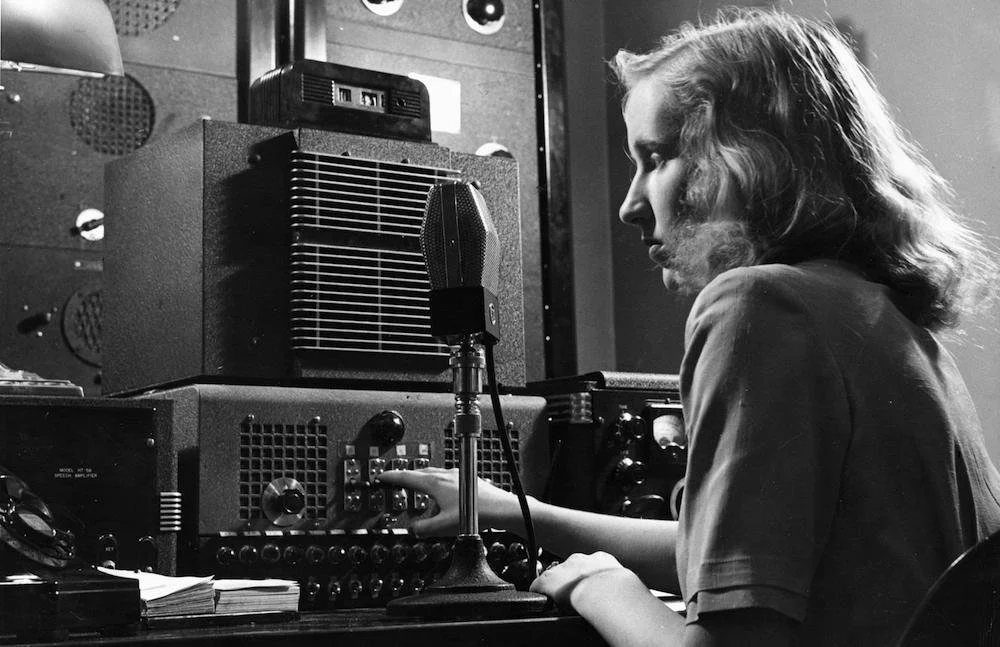In the Czech Republic, many bunkers were built during the Interwar Period and Communist rule. today, these once state-of-the-art fortifications lay abandoned. In response, the Ministry of Defense in the Czech Republic has decided to sell the bunkers to private investors.
Eliska Junkova: Queen of the Steering Wheel
Radio Revolution
Radio and its revolutionary effect were felt in Czechoslovakia just as it was in the rest of the world. It began with the first broadcasts, occurring before World War I, into the first Czech-produced program in late 1919. Of course, as radio technology progressed and advanced, its use as a medium for propaganda grew more and more robust. Despite its use in propaganda, radio also served as a tool to disseminate important information about the nation and the world at-large.
Jan Kotěra: Founder of Modern Czech Architecture
Jan Kotěra was an important figure in Czech architecture for his use of modern elements in his works, earning him the title of “founder of modern Czech architecture.” Kotěra’s career began with the renovation of Červený Hrádek, using both neo-Gothic and Art Nouveau elements outside and inside, respectively. Despite being controversial in terms of culture and architectural style, Kotěra’s life and career continued in success, culminating in the creation of his 1913 “masterpiece” the Museum of Eastern Bohemia. Throughout his life, Jan Kotěra continued to create and build works of great architecture.
Tomáš Masaryk and the United States
Tomáš Masaryk, first president of Czechoslovakia, was inspired by the freedom and democracy of the United States. While negotiating for Czechoslovakia’s independence, Masaryk developed not only political relationships, but also personal and intellectual ones with the United States. During the First World War, he was exiled after siding with the Allied Powers, but did not give up on garnering support from his fellow Czechoslovakians. The Lansing Declaration of May 1918 was one of many important moments in the future creation of the Czechoslovak Republic, which eventually came to pass, all before he died in 1937.
Czech Cottage Culture
Czech National Revival
A response to increased Germanization, the Czech National Revival revived Czech literature, language, history, and politics. Increased nationalism marked this period of cultural revival. The movement started before the 19th century with Czech intellectuals such as Josef Jungman and Josef Dobrovský becoming more discontent with the decrease in Czech culture, language, and national identity. Czech national identity also involved realism, rejecting the romanticism of the past, which was considered “anti-nationalist.” With the end of the Great War, the goals of the National Revival movement were successfully met.
Czech Cubism (Cubo-Expressionism)
The term Cubo-Expressionism was coined in the early 1970s to describe Czech avant-garde art in the 20th century, when elements of Cubism and Expressionism were combined. It was a revolt from earlier art forms with spiritual elements. Czech Cubism, as Cubo-Expressionism is also called, was applied to just more than art pieces, including furniture, objects, architecture, etc. One of the most famous Cubo-Expressionists is Pavel Janák, a Czech architect, designer, planner, professor, and theoretician.
Bertha von Suttner: the first woman to win the Nobel Peace Prize
Bertha von Suttner’s commitment to peace and anti-war movements created the building block to many significant changes in Europe. Unfortunately, the political figures and aristocracy she argued against ignored her warnings. For example, von Suttner warned governments and aristocracy of increased citizen involvement in affairs of war and even the use of nuclear weapons. Eventually, her ideas for peace were soon adopted post-World War II.
Hana Podolska: The "Coco Chanel" of Czechoslovakia
Hana Podolska was “the” fashion designer of the 1930s and 1940s in Prague. Her gowns and garments could be seen in well-known films worn by famous actresses, many magazines, and popular political figures. Before her life of fashion her father, who tragically died of tuberculosis, was an architect while her mother was a housewife. After moving to and growing up in Prague, Podolska worked with the local seamstress, which became the genesis for her fulfilled desire to be a fashion designer.
George "Papa Bear" Halas
The Chicago Bears began with American football coach, owner, and NFL administrator George “Papa Bear” Halas, born in Chicago, Illinois to Slovak immigrants. Initially, however, Halas began as a player who joined the Navy during World War I, before becoming a player-coach. Throughout his life, “Papa Bear” Halas invested his life into football, winning six NFL championships as head coach while practicing many innovative routines that allowed him and his team to win.
Dissolution of the Austro-Hungarian Empire
It's quite a difficult thing to pin down an exact historical reason for any significant event. We can, however, follow the lives of a specific royal family and the events that surrounded their tragic lives. Over the course of a seventy-two year span, we will look at the events that led to the creation and dissolution of the Austro-Hungarian Empire.









